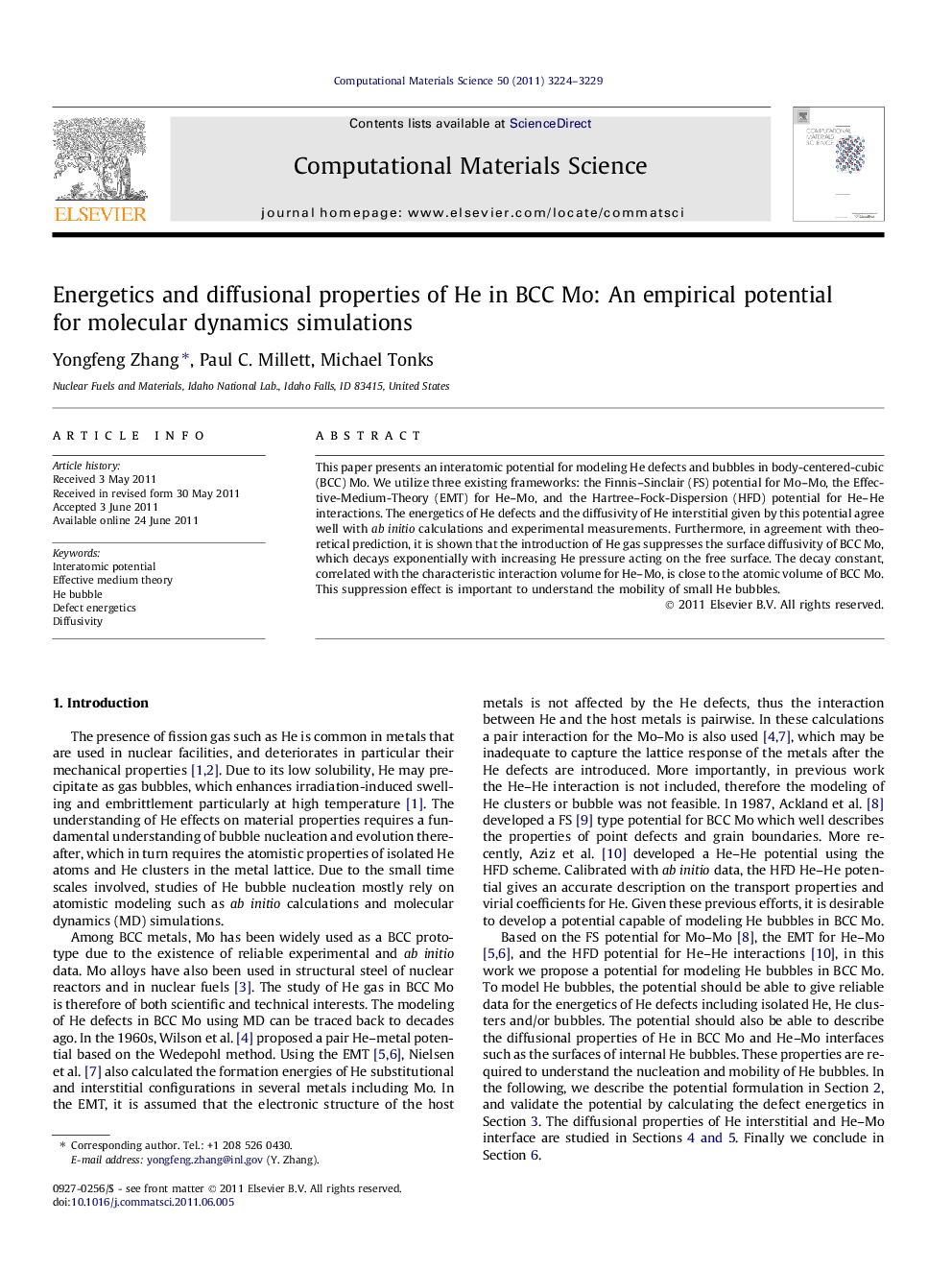| Article ID | Journal | Published Year | Pages | File Type |
|---|---|---|---|---|
| 1562235 | Computational Materials Science | 2011 | 6 Pages |
This paper presents an interatomic potential for modeling He defects and bubbles in body-centered-cubic (BCC) Mo. We utilize three existing frameworks: the Finnis–Sinclair (FS) potential for Mo–Mo, the Effective-Medium-Theory (EMT) for He–Mo, and the Hartree–Fock-Dispersion (HFD) potential for He–He interactions. The energetics of He defects and the diffusivity of He interstitial given by this potential agree well with ab initio calculations and experimental measurements. Furthermore, in agreement with theoretical prediction, it is shown that the introduction of He gas suppresses the surface diffusivity of BCC Mo, which decays exponentially with increasing He pressure acting on the free surface. The decay constant, correlated with the characteristic interaction volume for He–Mo, is close to the atomic volume of BCC Mo. This suppression effect is important to understand the mobility of small He bubbles.
► In this work we present an empirical potential for He in BCC Mo. ► The present potential well describes the defect energetics and diffusional properties of He in BCC Mo. ► The present potential is capable of modeling He clusters/bubbles in BCC Mo. ► The introduction of He gas suppresses surface diffusion of BCC Mo, in a form of exponential decay.
